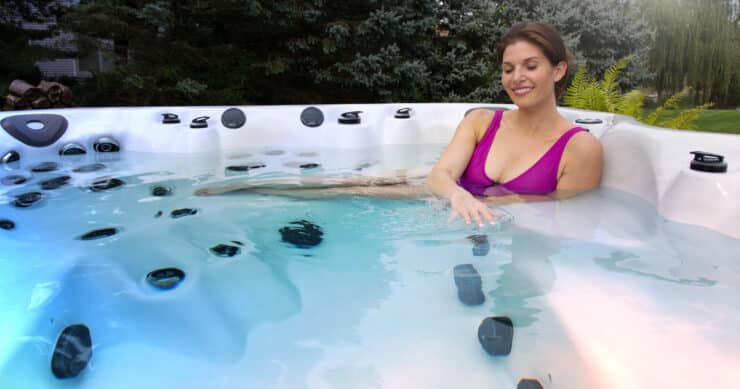Hot tubs are a great way to relax and unwind after a long day. The combination of the hydrotherapy jets and warm water create a soothing environment. But what could make the experience better?
You might be tempted to say hotter water. After all, one of the benefits of soaking in a spa is the therapeutic effect of warm water. Warm water therapy increases your core body temperature, which can lead to several positive physiological changes. Your blood vessels dilate, increasing blood flow and reducing your blood pressure. As you soak, you can feel your muscles relax and your mood improve.
Turning up the temperature on your hot tub will not necessarily maximize the benefits, though. In fact, it might do the opposite. When the water is too hot, like 106 degrees or hotter, it can cause health issues such as nausea or even stroke.
In fact, many users find that a temperature between 100 and 102 degrees is comfortable for most adults. If you have children soaking, you should take precautions and lower the water temperature.
With the ability to easily adjust the temperature settings, you can customize your hot tub experience to meet your individual needs and preferences. You can select a temperature, like 99 degrees for a soothing soak, or turn it up a couple degrees to help relieve muscle tension. With a Master Spas hot tub, you can easily select the perfect temperature for your unique needs.
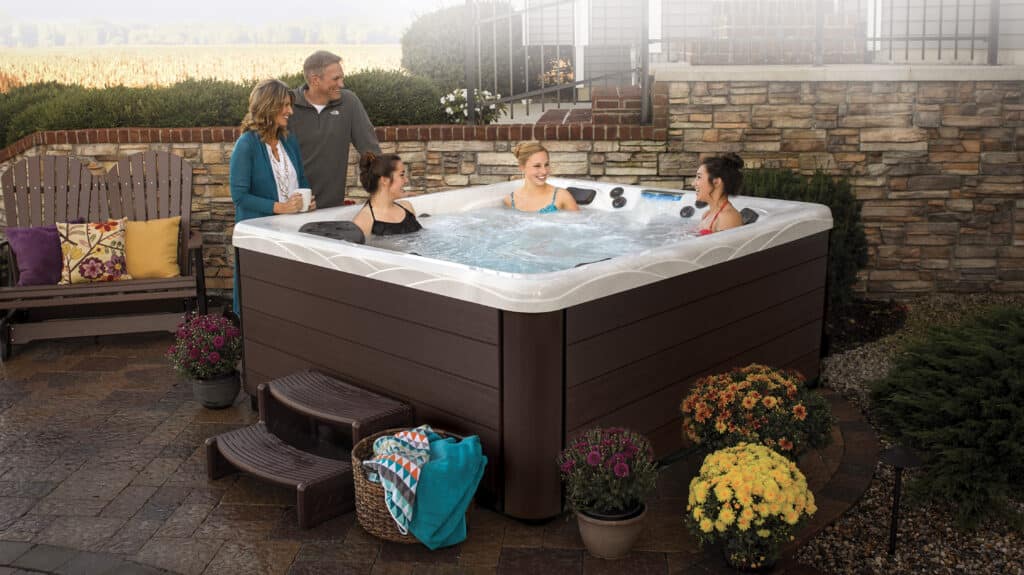
Hot tub safety guidelines
Hot tubs are a popular and relaxing addition to any backyard, providing a holistic therapeutic experience. However, as with any other product, it is important to consider safety when it comes to hot tub use.
In 1979, the Consumer Product Safety Commission established guidelines for hot tub safety, including the maximum water temperature. According to these guidelines, the maximum temperature for a hot tub is 104 degrees Fahrenheit.
The CPSC report states:
“Soaking in a hot tub with water heated to 106 degrees Fahrenheit, for example, can raise human body temperature to the point of heat stroke (or impairment of the body’s ability to regulate its internal temperature). These conditions can be fatal even to fully healthy adults.”
These regulations apply to hot tubs manufactured in the United States. However, most manufacturers worldwide have adopted these safety regulations.
Modern hot tubs come with advanced technology that makes it easy to maintain a safe water temperature. Master Spas models come with a digital control system that allows you to monitor and adjust the water temperature quickly and easily.
A system like this is required for manufacturers to obtain and keep their UL listing. A UL listing ensures that your hot tub is constructed properly and to the highest safety standards.
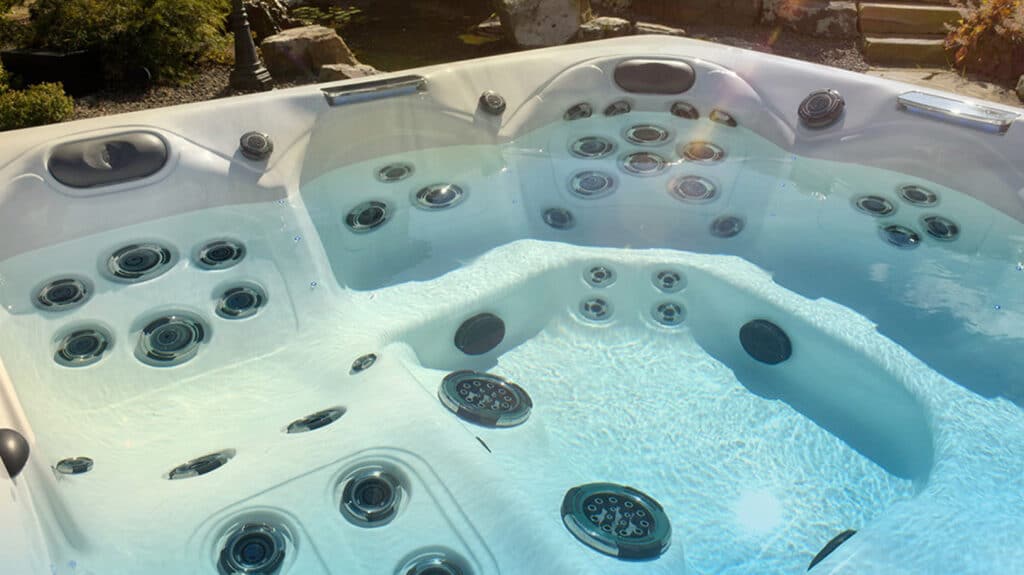
Hot springs vs backyard spa
A Master Spas hot tub is the perfect place to unwind, relax and have fun. One of the key factors that contribute to the ultimate relaxation experience is the water temperature.
You might be wondering why your hot tub only heats to 104 degrees Fahrenheit when other natural soaking spots, like hot springs, can have much higher water temperatures of up to 115 degrees Fahrenheit.
Well, the truth is that those hot springs and other public soaking spots are not designed for longer soaks. In fact, the recommended bathing time for hot springs depends on the water temperature. The hotter the water, the shorter the soak. In addition, you need to incorporate breaks to bring down your core temperature.
And, let’s be honest: You want to spend quality time in your hot tub. Five minutes can speed by, and you will find yourself wanting to stay in longer. You might not want to get out and take a break, especially if the jets are hitting the right spots.
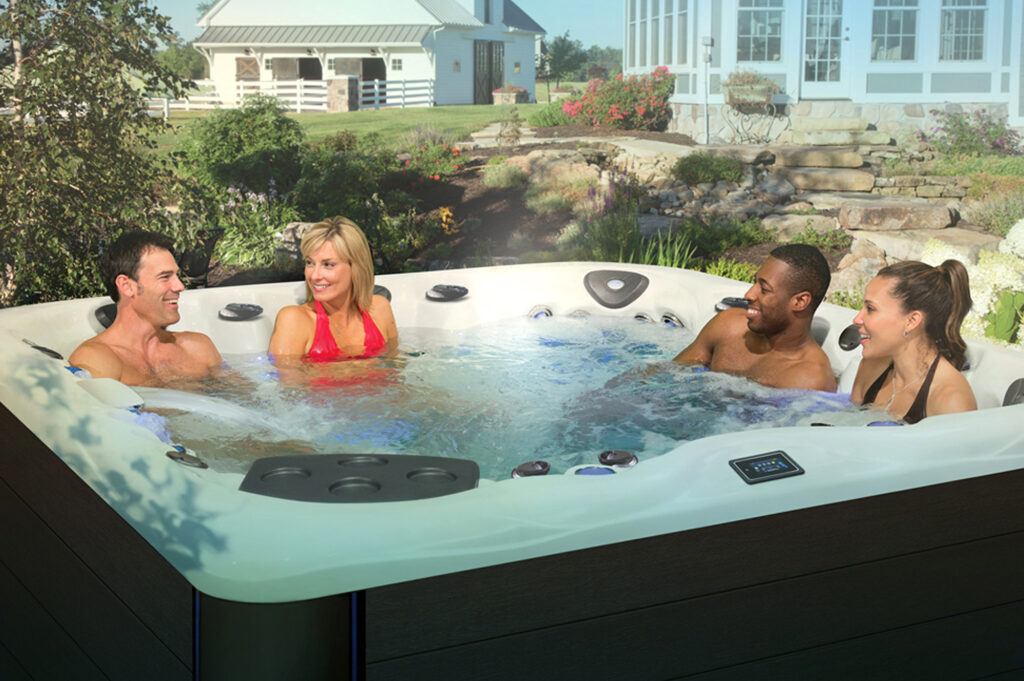
Hot tub temperature questions
As a hot tub owner, you likely know that there are many factors to consider when it comes to enjoying your hot tub. One important aspect is the water temperature, which can significantly impact your overall experience.
From finding the ideal water temperature to adjusting the settings for the season, these answers to common questions about hot tub water temperature will help you get the most out of your spa experience.
What is the most efficient water temperature?
As a spa owner, you want to keep your water at a comfortable temperature. But, you don’t want your monthly utility bill to skyrocket.
Keeping your hot tub at a higher temperature can increase your home energy usage. However, Master Spas hot tubs are designed to lock in the heat and help maintain water temperature. Full foam insulation protects the components and reduces heat loss. A high density cover also helps heat from escaping.
What temperature should my hot tub be in winter?
The temperature of your hot tub in winter will depend on several factors such as the climate, how often you use the hot tub, and your personal preference. Typically, though, people prefer to keep their spa warmer during the winter months.
During the winter, it’s important to keep your hot tub at a consistent temperature to prevent damage to the components.
What temperature should my hot tub be in summer?
Many people find that they are lowering the water temperature of their spa in the summer months. You might find that keeping the water between 96 degrees and 98 degrees will be refreshing while providing some therapeutic benefits.
If your hot tub is exposed to direct sunlight or is located in a hot and humid environment, the water temperature may naturally increase. In this case, you may want to adjust the temperature to ensure you are still comfortable.
Also, it’s important to regularly test and maintain the water quality in your hot tub, especially during the summer months. Higher temperatures can lead to increased bacteria and other microorganisms growth in the water, so keeping a close eye on the chemical balance can help keep your hot tub water clean and safe to use.
What is the perfect water temperature for my hot tub?
You might be surprised that the only person who can answer that question is … YOU. Finding the perfect temperature is all about your personal preference and safety.
For healthy adults, the water temperature of a hot tub should not exceed 104 degrees. But if you have young children or pregnant women using the hot tub, you’ll want to consider their safety as well. The U.S. Consumer Product Safety Commission recommends a hot tub temperature of just 100 degrees for pregnant women. It’s important for pregnant women to not let their core body temperature rise above 102.2 degrees. The Pool and Hot Tub Alliance recommends a water temperature of around 98 degrees for children.
If you’re unsure of what temperature to set your hot tub, consider starting at 99 degrees and gradually increasing the temperature until it feels comfortable. Just remember, it can take some time for the water to warm up if you increase the temperature several degrees.
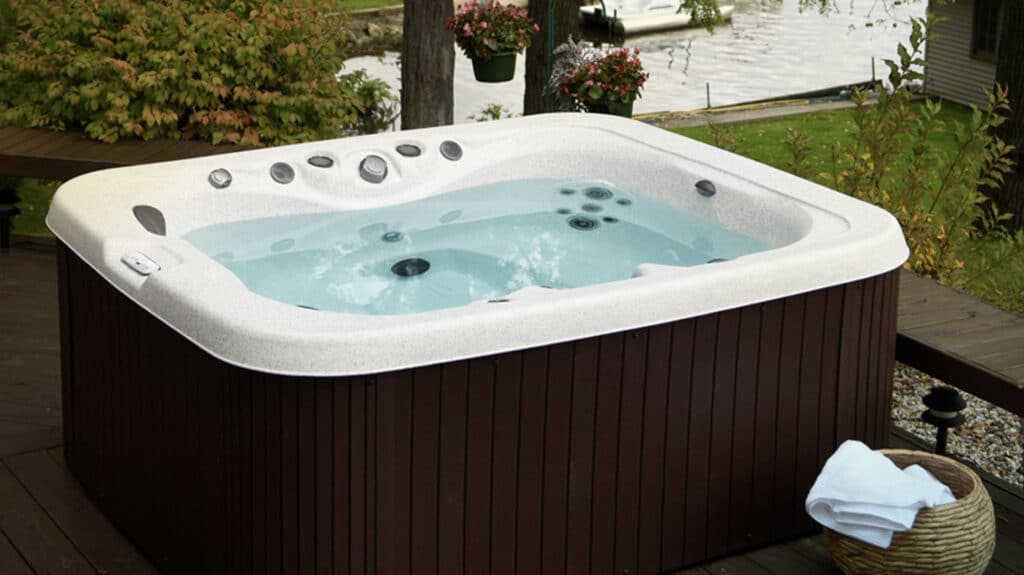
Benefits of hot tub therapy
Have you ever wondered why soaking in a hot tub feels good? Our average body temperature is 98.6 degrees. When you get in water that’s warmer than your body temperature, it has a soothing effect.
Soaking in a hot tub raises your core body temperature, which causes several physiological changes. Your blood vessels will dilate, increasing the rate of blood flow, and decreasing your blood pressure.
These physical health benefits of a hot tub can be realized by soaking in water between 102 degrees and 103 degrees. Raising the temperature of the water does not correspond with increased health benefits.
Physical benefits of soaking in a hot tub
Relaxation. As blood flow increases, your muscles will relax. You might also notice that pain decreases, too.
Joint mobility. When your muscles are relaxed, you can move through a greater range of motion. Many people enjoy using a hot tub for stretching and gentle exercise.
Promotion of healing. The jet action found in spas can promote healing by providing even more oxygen to the area than is provided by warm water alone. The heat and pressure from the jets can also raise the level of antibodies and white blood cells delivered to the area, promoting the destruction of bad cells and stimulating the formation of new tissue.
Better sleep. Research shows that you will fall asleep more quickly and sleep better after soaking in a hot tub. How does a hot tub help sleep? The change in core body temperature helps induce sleep. People who struggle with chronic pain might also feel more relaxed after soaking, which will help at bedtime.
The best way to realize the benefits of hot tub therapy is to create a safe soaking environment. Keeping your water temperature in the recommended range will help you put your mind at ease.
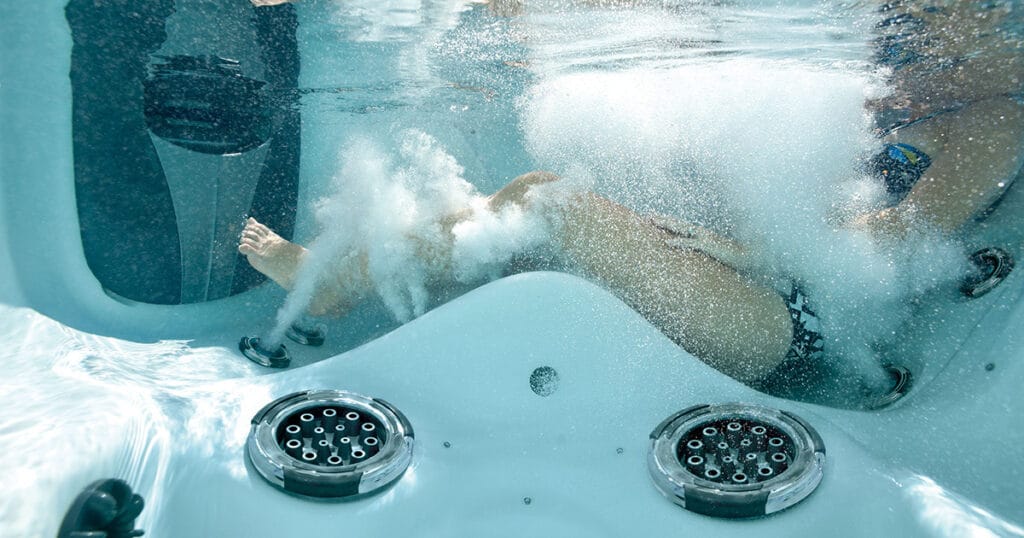
How to buy a hot tub
Look forward to spending more time in your own backyard oasis. A Master Spas hot tub can be enjoyed safely by the entire family. You can click here to learn more about the benefits of hydrotherapy. Or, contact your local Master Spas retailer to learn more about spa ownership. Wondering how much a Master Spas hot tub costs? You can request a quote here.


